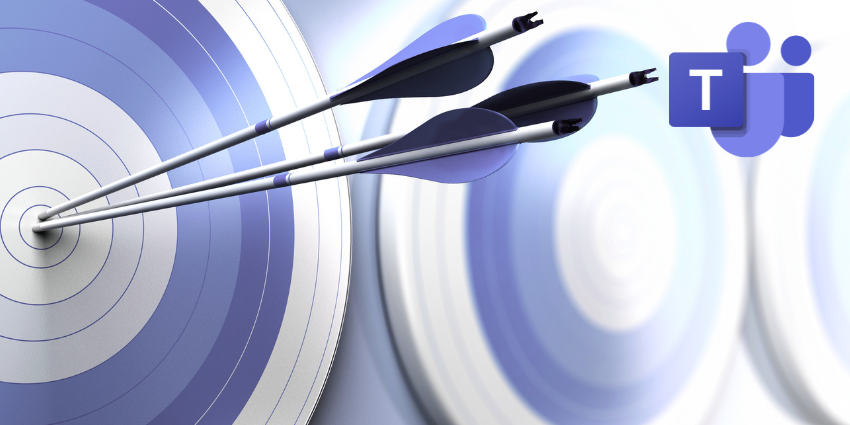It can be complicated to pinpoint the most impactful Microsoft Teams features and how they’ll benefit your team. After all, Microsoft’s cloud-based unified communication and collaboration platform is packed full of capabilities – and its feature set is constantly evolving.
These days, Microsoft Teams includes everything from state-of-the-art artificial intelligence assistants to calendaring tools, extended reality applications, and more. However, some of this platform’s capabilities stand out more than others.
Here’s our guide to the five most valuable Microsoft Teams features you should be exploring if you’re using Teams to boost your team’s productivity.
The 5 Top Microsoft Teams Features
As mentioned above, Microsoft’s feature list for Teams is constantly expanding, so we definitely recommend keeping up to date with our news reports (and Microsoft’s own product roadmap). In the meantime, these are the Microsoft Teams features we think have the biggest impact on the enterprise.
1. Seamless Integration Options
One of the best things about Microsoft Teams is how flexible it is. First of all, even though Microsoft has now unbundled Teams from Microsoft Office, the platform still works perfectly with all of Microsoft’s business-focused tools, from Word and Excel to SharePoint, OneDrive, and Outlook.
There are even various Microsoft apps that can enhance the functionality of Teams, such as Microsoft Places for AI-powered workplace scheduling and desk booking, to Microsoft Loop. However, you’re not exclusively limited to Microsoft tools if you want to upgrade the functionality of Teams.
The Microsoft app store makes it easy to connect your Teams ecosystem with endless apps for productivity, customer service, human resource management, scheduling, project management, and more. Check out our top Microsoft Teams app guide for more inspiration.
Plus, Microsoft plays well with other vendors, allowing companies to leverage Direct Routing or Operator Connect for business phone features and contact center capabilities.
2. Microsoft Teams Features for Security
Security and compliance will always be critical concerns for any business investing in new technology. Fortunately, Microsoft makes it relatively easy to enhance your security strategy. First, the company partners with a range of vendors who can offer support with archiving, eDiscovery, governance, call recording, and more.
Plus, the Teams ecosystem has plenty of incredible features built into it to improve security. Teams is built to be trustworthy by design, with end-to-end encryption, comprehensive access controls, and multi-factor authentication. With Microsoft Teams, you can access unique features like “safe links and attachments” for files shared by employees.
Businesses can set up conditional access policies and use the Microsoft Purview compliance portal to manage retention policies, data loss prevention, and legal hold strategies. Teams also include tools for auditing, customer key encryption, and information barriers.
3. Artificial Intelligence in Teams
For some time now, Microsoft has been working on making collaboration and communication “smarter” for team members. It introduced Copilot in Microsoft Teams for meetings and chats, offering users an AI assistant to summarize and transcribe meetings and create content.
Today, Copilot can create messages for conversations, intelligently recap calls and discussions, and even help business leaders create meeting agendas or assign action items to team members. Plus, AI features built into Teams, like Microsoft’s “IntelliFrame” solutions, can boost the quality and clarity of video meetings.
Today, companies have more ways to leverage AI-powered Microsoft Teams features than ever before. The Microsoft Teams Premium add-on has advanced Copilot functionality for recapping and summarizing meetings. Microsoft’s Copilot Studio enables companies to create their own autonomous agents capable of completing various multi-stage tasks.
Microsoft has even created specific Copilot Agents for Microsoft Teams, such as the Facilitator agent (For note-taking and summarization) and the interpreter agent (for translation and transcription).
4. Microsoft Teams Features for Collaboration
Collaboration features form the heart of Microsoft Teams. Since day one, the company has given employees countless intuitive ways to collaborate with colleagues. You can chat to individuals, or create group threads with asynchronous messaging. There are options for calling (either through Microsoft phone plans, Direct Routing, or Operator Connect), and video or audio conferencing.
Teams also supports screen and file sharing, polling for collecting insights from team members, and calendar options for scheduling. Plus, you can host webinars and events directly through Microsoft Teams, too. Some of the more advanced Microsoft Teams features for collaboration include PowerPoint Live for presentations and Microsoft’s virtual whiteboard.
There’s Microsoft Teams Places, which helps employees book meeting rooms and desks, and track the availability of their colleagues with artificial intelligence. Microsoft Teams also integrates with Planner, making it simple for staff to create and manage to-do lists, and assign tasks to employees.
The AI features in Microsoft Teams help boost collaboration with simple transcriptions, translations, and recaps for meetings. Plus, companies can use Microsoft Mesh to connect with colleagues in “Metaverse-style” environments, taking advantage of extended reality.
5. Scalability: The Endless Opportunities
Finally, scalability might not be one of the most commonly mentioned “Microsoft Teams features” among companies evaluating the platform for enterprise users. However, we think it’s one of the key things that makes Teams such an impressive choice for organizations.
Microsoft Teams doesn’t just integrate seamlessly with endless apps and tools. It empowers companies to use any devices they might need for meetings and collaboration sessions, with bring your own device capabilities. There are even Microsoft Teams Rooms solutions, which can help organizations design the perfect meeting space for any group.
Beyond that, as mentioned above, Microsoft doesn’t just offer its own calling plans for companies who want to leverage cloud telephony options. It also supports Direct Routing options from hundreds of worldwide vendors and Operator Connect capabilities.
Plus, companies can build on Microsoft Teams with additional plans, like Microsoft Teams Premium, – to make meetings more personalized and intelligent. They can also work with third-party vendors to enable custom integrations and configuration options. The options are endless.
Discover the Top Microsoft Teams Features
There are dozens of Microsoft Teams features worth exploring if you’re looking for ways to empower and invigorate your employees. The best way to discover which features will impact your company most is to experiment with Teams.
If you need help deciding whether Microsoft Teams is the right option for your organization, find our complete guide to the collaboration platform here. Alternatively, check out our guides to Microsoft Teams migration, vendors, and more to start planning your implementation strategy.







